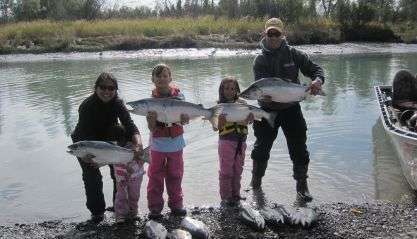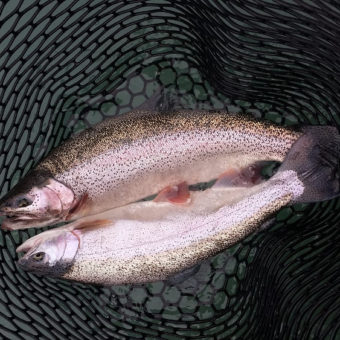Kings rebound in 2015…
After nearly three full seasons of very low king salmon returns and countless restrictions, king salmon numbers in 2015 were a welcome relief. For the first time in several seasons, the late run of Kenai King salmon season stayed open right up to its annual closure date of August 1. While it was by no means a huge return, it did at least meet minimum escapement goals which was certainly a step in the right direction. For the most part we did not spend a whole lot of time pursuing kings in July as with the overly abundant sockeye, the “hit and miss” king fishing just did not have the same appeal as the “near guarantee” sockeye fishing. We did get down to the Kasilof River on a few July days and it did provide some good action for some very nice kings from the drift boat.
May and June were closed on the Kenai for kings but the neighboring Kasilof did provide some very good early season king salmon action. We started fishing the Kasilof in late May and it seemed like on every trip up until we transitioned to sockeye in mid-June, we saw multiple chances at nice kings and we brought several fish to the net on each trip. This was all with no bait and single hook restrictions which all says the return was relatively strong. Again it was really encouraging to see this resurgence in king salmon abundance as the early run of the Kenai king also showed improved numbers as did several other Cook Inlet king salmon rivers.
 Seeing the king rebound (hopefully) is, for lack of a better word, conflicting for me as we have been very conservative with our participation in the fishery over the past several seasons. We shifted more toward the dependability and sustainability of sockeye trips and that move has proved immensely successful. That said, the art and allure of king fishing is an entirely different animal and we do look forward to revisiting this legendary fishery the Kenai made its name with. The future of king fishing on the Kenai will have a different feel after the recently poor seasons and hopefully more will choose to release rather than harvest these incredible fish. We will continue to highly encourage catch and release particularly in seasons where adequate escapement is less than certain.
Seeing the king rebound (hopefully) is, for lack of a better word, conflicting for me as we have been very conservative with our participation in the fishery over the past several seasons. We shifted more toward the dependability and sustainability of sockeye trips and that move has proved immensely successful. That said, the art and allure of king fishing is an entirely different animal and we do look forward to revisiting this legendary fishery the Kenai made its name with. The future of king fishing on the Kenai will have a different feel after the recently poor seasons and hopefully more will choose to release rather than harvest these incredible fish. We will continue to highly encourage catch and release particularly in seasons where adequate escapement is less than certain.


















































